Please Note: This post is about a salmonella outbreak that occurred in several parts of the United States in winter and spring 2021. While that outbreak has passed, cleaning and disinfecting your feeders is always a good practice.
I’ve lived next to the same retired couple for 20 years. They’re kind with words and consistent with seed. Their place is breakfast for the birds. My place is the bathroom. I saw my first Steller’s jay on our shared wood-slat fence last spring. Exciting. But I’ve cleaned up bird poop for 20 years. Not exciting. I’m regularly hosing down my backyard because my neighbors keep a full bird feeder in their front yard.
Well, they did until this year. I walked the block last night. Their bird feeder is empty and cleaner than I’ve ever seen it. As it should be.
Eastern Idaho, where I live, is in the middle of a salmonella outbreak. It’s not a localized occurrence. Birds across the West are sick and spreading the illness as they congregate then migrate. Cases are coming in from Washington to Utah and to the east, North Carolina is having trouble too.
While bird feeding is experiencing a pandemic boom in popularity, feeding birds at this moment is having dire consequences. Birds are dying in no small part due to bird feeding.
You can still enjoy birds. But it’s time to remove seed and take down the feeders.
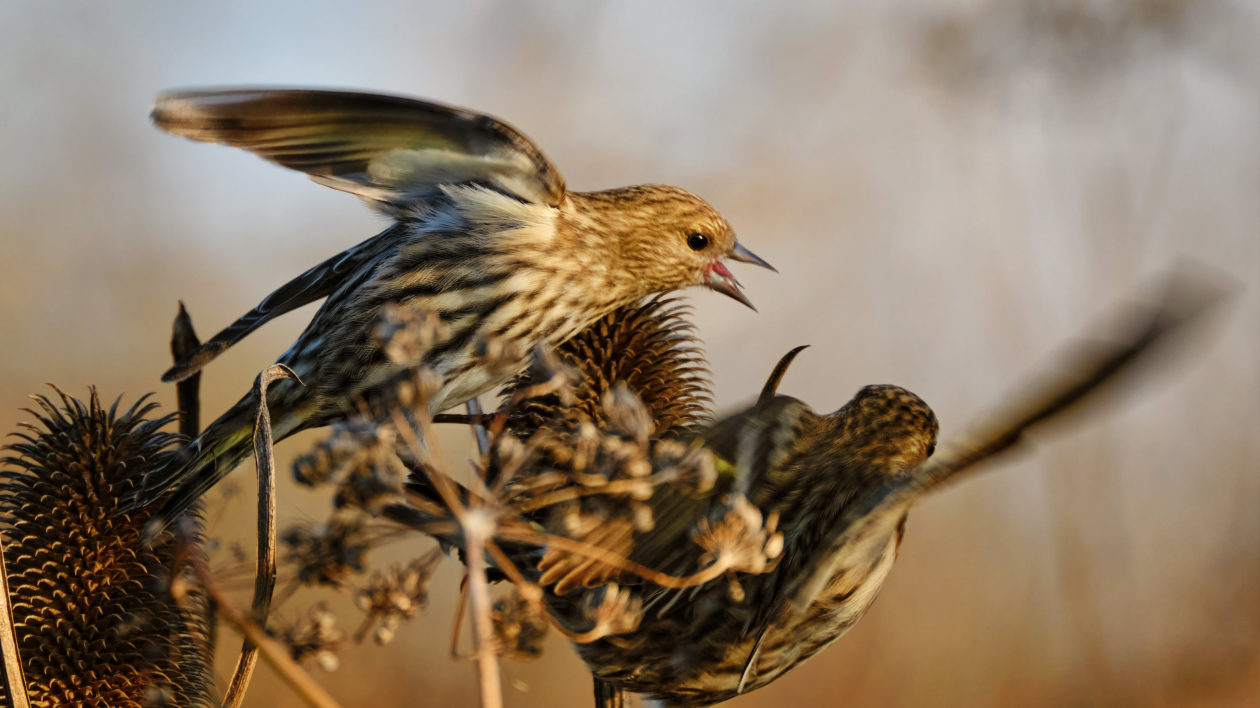
Outbreak
Songbirds are prone to salmonellosis, commonly called salmonella. Pine siskins are songbirds and they experienced an irruption over the winter. That’s a population explosion so there’s a lot of them flitting about this winter. Many of them are sick.
“This is the biggest outbreak I’ve heard of and I’ve been following birds for 25 years,” says Nicole Michel, National Audubon Society director of quantitative science. “It all ties into pine seed crops in the boreal regions where they usually are. There weren’t enough seeds so they came south. They’re weak because they’ve traveled farther than they’re used to and they’re congregating wherever they can eat.”
Salmonella starts when bird food gets wet. That’s how the bacteria grows on seed then it spreads through feces dropped in the same place. Salmonella is a fatal bacterial infection for birds and it’s hitting siskins hard because they congregate around feeders, but the outbreak isn’t species-specific. Anything eating seed in your yard, resident or migrator, can spread or contract salmonella. The three Ds of symptoms include ‘depressed, drowsy and diarrhea.’ Depression won’t be obvious in wildlife, but drowsy will. Infected birds close their eyes often and they puff up, like they do in cold weather, but they’re not cold. They’re sick.
California started seeing more cases in December. Other states are seeing an uptick this spring as the bacteria continues to spread, which is why more state agencies are asking people to remove their bird feeders.
“When large numbers of pine siskins congregate, the disease can spread rapidly causing high mortality,” says Krysta Rogers, California Department of Fish and Wildlife senior environment scientist and avian disease specialist. “Most birds die within 24 hours of infection.”
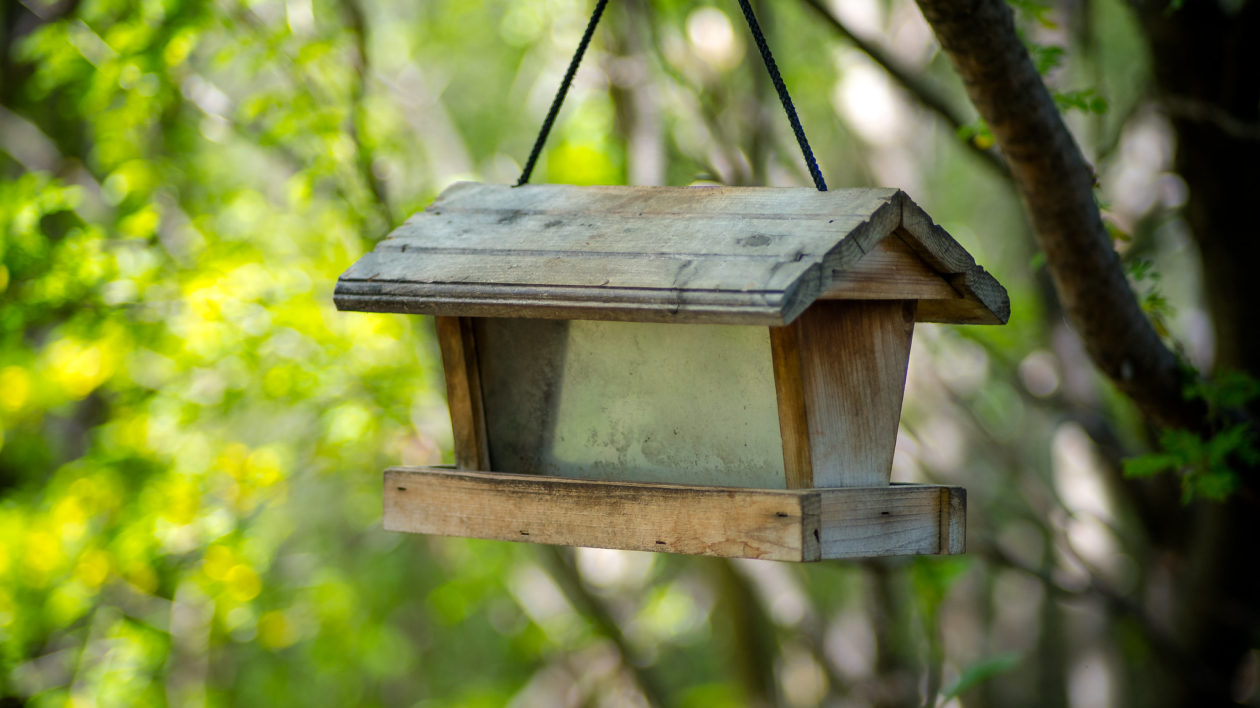
Clean Your Feeders
What those birds leave behind, feces and germs, lingers and it comes in contact with anything else enticed to perch nearby. That’s why you have to clean.
Clean feeders once a week with warm soapy water in normal years. Clean them several times a week during salmonella years like the one we’re in now. Better yet, clean it with one part bleach to 10 parts water.
Soak the whole thing in that solution for about 10 minutes then air dry the container while you remove spent grain and other waste from the area around and under the feeder hanger. Put on gloves before you clean and wash your hands after handling equipment or collecting dead birds.
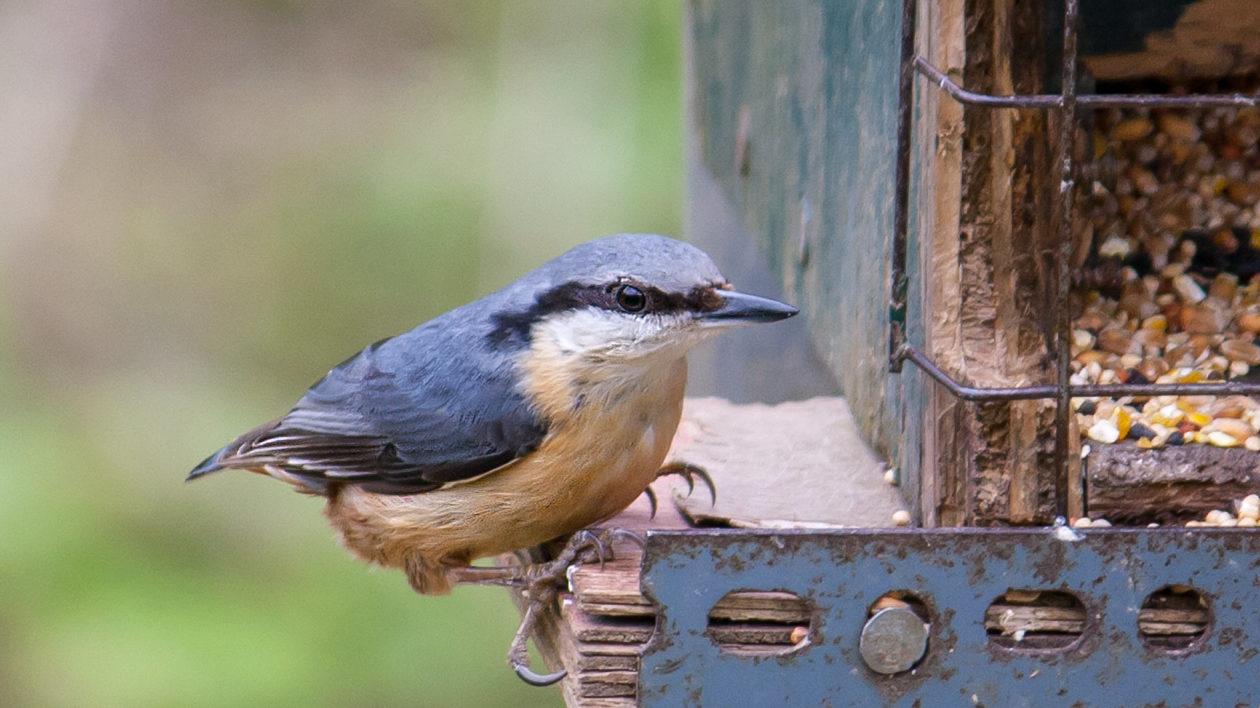
Encourage Avian Social Distancing
Especially this year, don’t stop at cleaning. Put your feeder away for a month. Michel, based in Portland, Oregon pulled her feeder for two months. If you must rehang your cleaned feeder, hang it empty.
“There’s a lot of other food sources they can still find,” Michel says. “The risk of death by starvation is lower than the risk of death by salmonella if you keep a contaminated feeder up.”
It’s the concentration of birds in one place that spreads the problem, but they won’t hang around if there are no hand-outs. The birds need to social distance to save themselves. And not to worry, they won’t starve without your supply.
“Although stopping feeding may seem like it will harm birds, in reality, they use feeders as just one source of food and will quickly disperse to find other food sources and in so doing, reduce transmission of this disease at feeding sites,” says Tempe Regan, Idaho Department of Fish and Game regional diversity biologist. “Sanitation is critical and it is your responsibility to ensure your feeders are not facilitating disease transmission.”
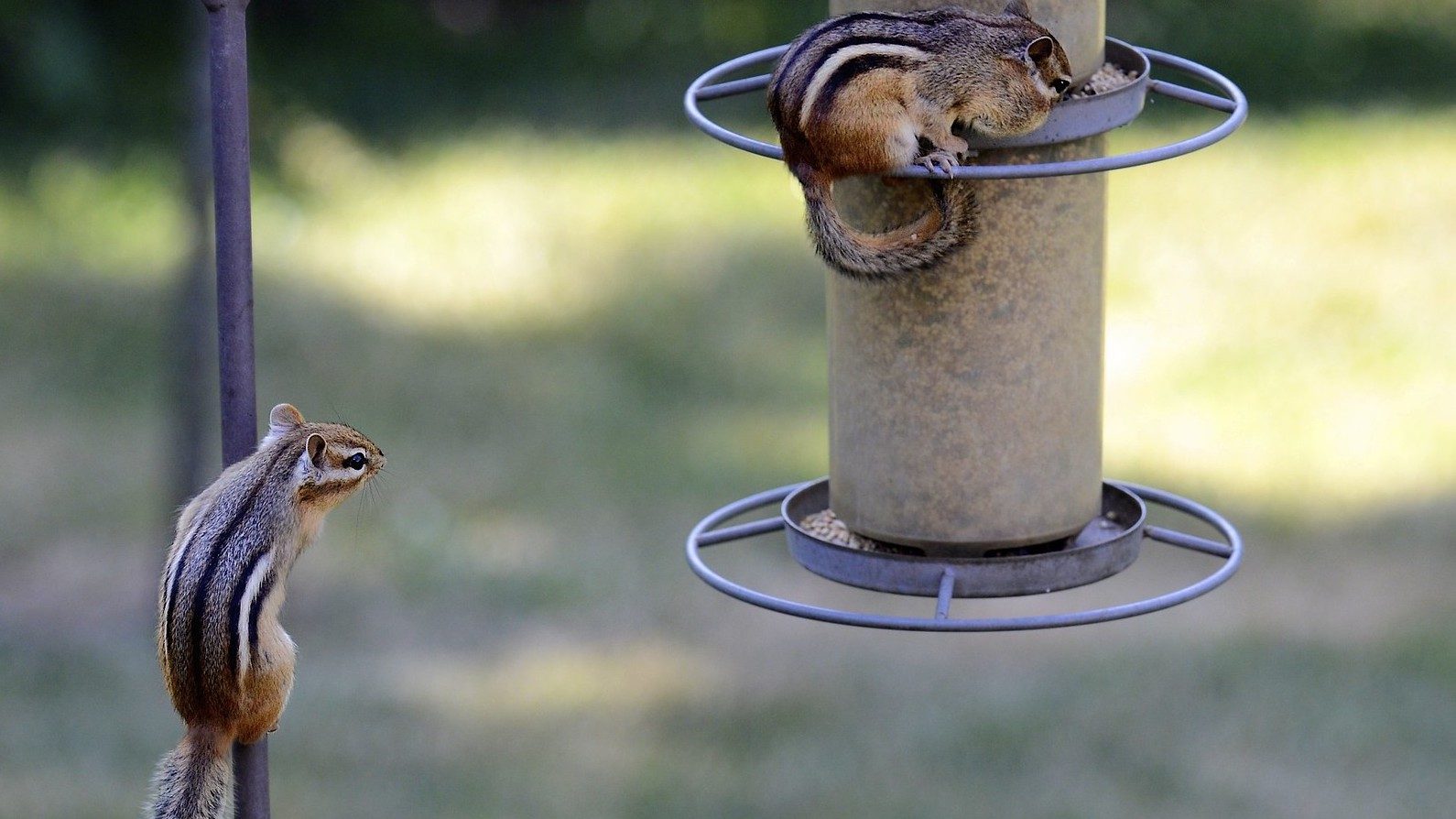
Dogs & Cats
Disease transmission to humans is possible. In mammals, the symptoms are more like food poisoning, but pets are a bigger concern especially. The drowsy symptom mentioned above may cause a bird to stay on the ground when approached. Obviously, the same is true if it dies. That’s an easy meal for a predator allowing the disease to spread to and/or through your furry family member. Keep dogs and cats out of hunt mode in your neighborhood this spring. (And better yet, don’t allow your pets to roam freely and hunt wildlife, ever).
Refraining from feeding birds can be a bummer, especially those new to the birding hobby. But you can still watch what’s moving through without feeding it. The birds are still around. If you have a yard, you may want to consider incorporating natural landscaping that provides habitat without concentrating birds.
Backyard birding has become so popular that is has fueled a seed shortage. But now is not the time to search for seed. Keep the binoculars and field guides handy. For the time being, though, forego the feeding to help the birds you love.
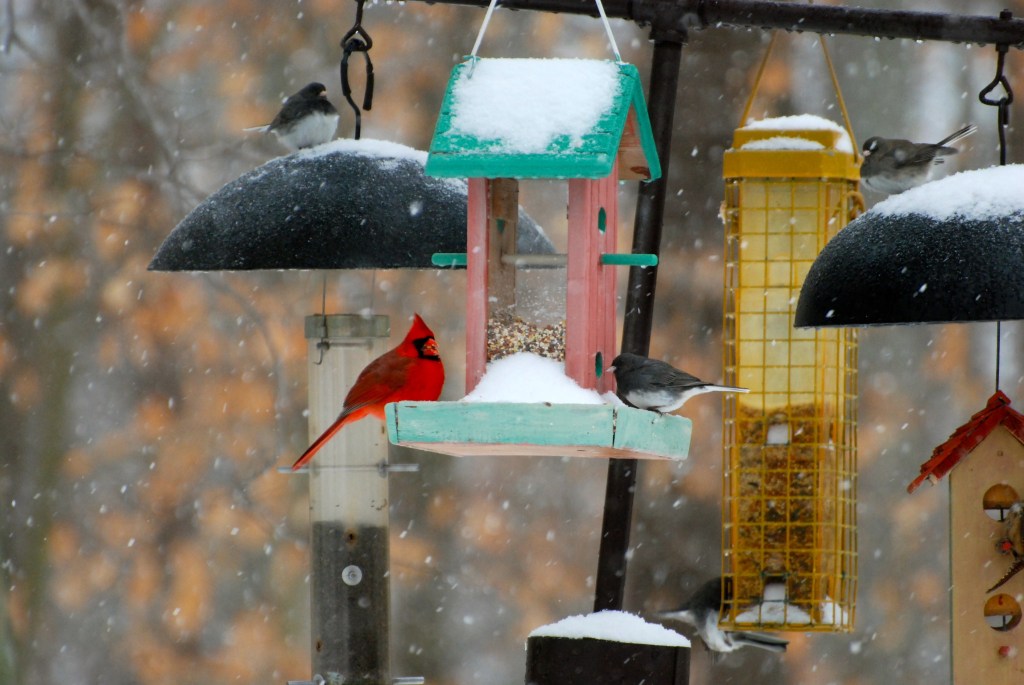



Can a back yard bird feeder affect chickens? I’ve recently lost 2 chickens one , one day and 5 days later another they both died the same way
As we await the return of Humming Birds to southeastern PA, it’s sad to read of the plight occurring out west. I happened to see a large Martin house yesterday that was so filthy I hope that no bird would use it. In my opinion, as a practical matter, feeders should be cleaned between fillings as opposed to a fixed interval. Currently we are seeing a family of Eastern bluebirds, and a family of Red Finches at our feeders. The Bluebirds are the first we have ever seen in the 45 yrs we have lived here.
I put out a bird feeder for the 1st time in my life and am enjoying the various birds that are feeding there. I live in central Florida, is this a concern here?
Hi Denny,
The salmonella outbreak has not been documented in Florida this year. However, it is still good practice to clean and sanitize your feeders regularly.
Thanks,
Matt Miller
I’m in Houston Texas. This is so so sad. I have an array of 3 feeders. 2 are metal with pencil sized bar that the pine siskins line up on to eat. The other is a vertical tube feeder. My mixed flock numbers above 50 birds that regularly congregate at my feeders very nearly at the same time. I know there are more than two dozen pine siskins. They are delightful to watch. There’s a young family of 6 cardinals. My new home office overlooks the yard (abutting a park so lots of open space) and I’ve been looking for signs of sick birds since Houston put out this Salmonella alert. Sadly, this morning, I found a sick siskin on the ground and could do no more for it than carry it in gloves out to some brush and leave it there. No time to take it to the rescue and I’ve heard they don’t survive long. I’ve taken down the feeders. It’s heartbreaking to see all the birds coming for their regular feed time and look lost. I’ll miss them.
Why aren’t we seeing gold finches at our feeders in Grand Rapids, Michigan? Could it be the salmonella outbreak? I cleaned both feeders and used fresh niger seed Thank you.
I live in Southern Oregon and this is the first I’ve heard of the salmonella. Several of us used to feed birds around my apartment complex but we stopped a year ago due to some complaints.
Unfortunately, we are still feeding some of the feral kitties in the neighborhood and the birds are now eating the cat food. This is both a lure for the cats to catch the birds and bad for the birds congregating.
I have tried several different things to keep the birds out of the cat food like pinwheels and ribbons but it seems they have adjusted to both. Any suggestions?
The salmonellosis was spreading among Pine Siskins and Finches here in the WEST. The Siskins and Finches are migratory and move up to Canada in Spring. Audobon and Cornell advised temporarily removing feeders in Winter and early Spring. It’s okay to put clean feeders out once there are no Finches or Siskins in your area.
Here, in Northern California, we are now getting Cedar Waxwings, Robin’s and Orioles. It’s okay to put feeders and birdbaths out now.
Please always clean your feeders and birdbaths at least 1x a week. You wouldn’t want to eat off plates or drink from glasses that haven’t been washed and neither do our birds and other wildlife. ??
Thank you
I have a 40 lb. bag of sunflower seed. What to do?
I have the same birds that come every night Cardinals in particular and then I have a white bird that is an albino Sparrow I do believe I find it awfully hard to stop feeding these birds what should I do? I live in Indiana
How can you find out of your state has an outbreak?
If you are feeding birds, learn to identify them. The birds spreading the disease in 2021 are Pine Siskins. If this species is visiting your feeding stations, especially in larger groups, take your feeders down and clean them and follow the directions to keep feeders down until the Pine Siskins situation resolves.
Cleaning of feeders must be done weekly. If this is something you don’t feel you will do, stop feeding birds. It is that simple. Always wear protective/disposable, water proof gloves when handling feeders. First, use a mild, non bacterial soap like Mrs. Meyers to clean feeders. Use hot water. Use a hose and a strong stream of water to remove droppings and rotting seed. The one to ten bleach solution is best, soak the feeders in it for ten minutes as suggested after washing to sterilize feeders.
As suggested by another commenter, after soaking in the ten percent bleach solution, the feeders must be carefully rinsed with clean water to remove ALL traces of bleach. Then, feeders are left in the sun to air dry.
Sound involved? Caring for any animals is. Shelters are filled with dogs and cats that owners were unable or unwilling to properly care for. Learn what is involved before taking up animal care. From feeding birds to owning any creatures, study carefully what is needed by YOU to do it correctly. Bottom line is that you will kill birds if you don’t.
If bird feeding is to much for you, just stop. We don’t own wild birds. Unlike other animals we keep as pets, the good thing about finding out bird feeding is not your cup of tea? The birds will do just fine, without your help.
One other thing, dogs and cats are able to contract salmonella under your feeding stations. Move the feeders frequently. Clean under them. If at all possible, keep feeding stations out of areas where your dogs and cats hang out. Dogs can contract salmonella and pass it on to humans. Also, cats kill birds. If your cat attacks and kills birds using your feeders, they are not helping them.
Use common sense when cleaning feeders. I would not use your kitchen surfaces to clean feeders. Your dogs may also track in bird droppings full of salmonella and other diseases, depositing them on your carpet, beds and furniture if they eat grass and old seed under avian feeding stations. Yummy!
As for hummingbird feeders, it is suggested they are changed and cleaned with soap, ten percent bleach soak and hot water every three to five days. As with seed feeders, make sure the bleach is completely rinsed away and then air dry the hummingbird feeders in the sun before refilling with fresh sugar water containing no red dye.
If you can’t accommodate your birds properly, then stop feeding them! It really is, that simple.
You’re awesome Kris. Thanks!
Hi Matt. Jason again. Thanks for your comment. My real point, though, I don’t think has been addressed. My concern is the lack of references, especially authoritative sources like the Cornell Lab. I would have felt much better had they been consulted.
Hi Kris.
I would like to make a comment on this. The situation and solution you describe could be accurate. But, of course, like all the shutdownsd for Corona-virus, it will have its implications, probably severe. I’m an amateur birder, so I’m kind of hooked into the birding community. I’ve heard absolutely nothing about this. zero. That’s doesn’t mean it’s not a thing, but I would like to point out three sources of information about birds that have no peer. First, there is the Cornell Lab of Ornithology. As far as I know, there is no more authoritative source than Cornell. If there is a sense among bird experts that people needeto take down feeders in mass, you can be certain Cornell would be involved. The Audubon Society is another. Finally, there is the birding community itself, consisting of state and local groups of birding enthusiasts. These are highly dedicated, highly passionate, highly informed, and highly knowledgeable people that include not only amateurs, but professional biologists who specialize in birds. These people know their stuff, and they keep their ears to the ground. Before I suggested that people take their feeders down in mass, I would make sure and consult at least these three sources. All the best.
Hi Jason,
Thanks for your comment. You are correct that there was no nationwide call to take down bird feeders. However, the salmonella outbreak was well documented throughout the western United States (as noted in the story) and there were other outbreaks far from the west, as in North Carolina. The outbreak was severe this year. Given this, and the fact that this spread rapidly, it seems caution is a very sensible approach.
I do understand your concern for the birds and for your fear about unintended consequences. However, it is very rare that birds starve without bird feeders.
These outbreaks do pass so it should be safe for most to put their feeders back up soon.
Thanks for your comment.
Matt Miller
Cool Green Science editor
How sad I love watching the birds but not watching them die. Do you know if they are having problems in northern CA?
Hi Linda,
Yes, the salmonella outbreak was found in northern California. You can read the California Department of Fish and Wildlife’s press release on this subject here: https://cdfgnews.wordpress.com/2021/02/08/salmonellosis-outbreak-causing-songbird-deaths/